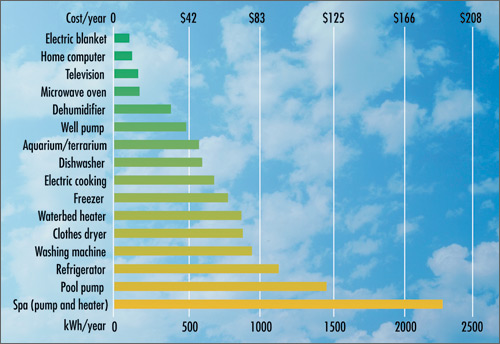Appliances


What's the Real Cost?
Every appliance has two price tags—the purchase price and the operating cost. Consider both when buying a new appliance.
Appliances account for about 20% of your household's energy consumption with refrigerators, clothes washers, and clothes dryers at the top of the consumption list.
When you're shopping for appliances, think of two price tags. The first one covers the purchase price—think of it as a down payment. The second price tag is the cost of operating the appliance during its lifetime. You'll be paying on that second price tag every month with your utility bill for the next 10 to 20 years, depending on the appliance. Refrigerators last an average of 13 years; room air conditioners and dishwashers, about 11 years each; clothes washers, about 9 years.
When you do have to shop for a new appliance, look for the ENERGY STAR® label. ENERGY STAR products usually exceed minimum federal standards by a substantial amount. The appliance shopping guide lists some of the major appliances that carry the ENERGY STAR label and provides helpful information on what to look for when shopping for an appliance.
To help you figure out whether an appliance is energy efficient, the federal government requires most appliances to display the bright yellow and black EnergyGuide label. Although these labels will not tell you which appliance is the most efficient, they will tell you the annual energy consumption and operating cost for each appliance so you can compare them yourself.
What's a kilowatt?
When you use electricity to cook a pot of rice for 1 hour, you use 1000 watt-hours of electricity! One thousand watt-hours equals 1 kilowatt-hour, or 1 kWh. Your utility bill usually shows what you are charged for the kilowatt-hours you use. The average residential rate is 8.3 cents per kWh. A typical U.S. household consumes about 11,000 kWh per year, costing an average of $900 annually.

How Much Electricity Do Appliances Use?
This chart shows how much energy a typical appliance uses per year and its corresponding cost based on national averages. For example, a refrigerator uses almost five times the electricity the average television uses. Visit the Consumer's Guide for instructions on calculating the electrical use of your appliances.




















